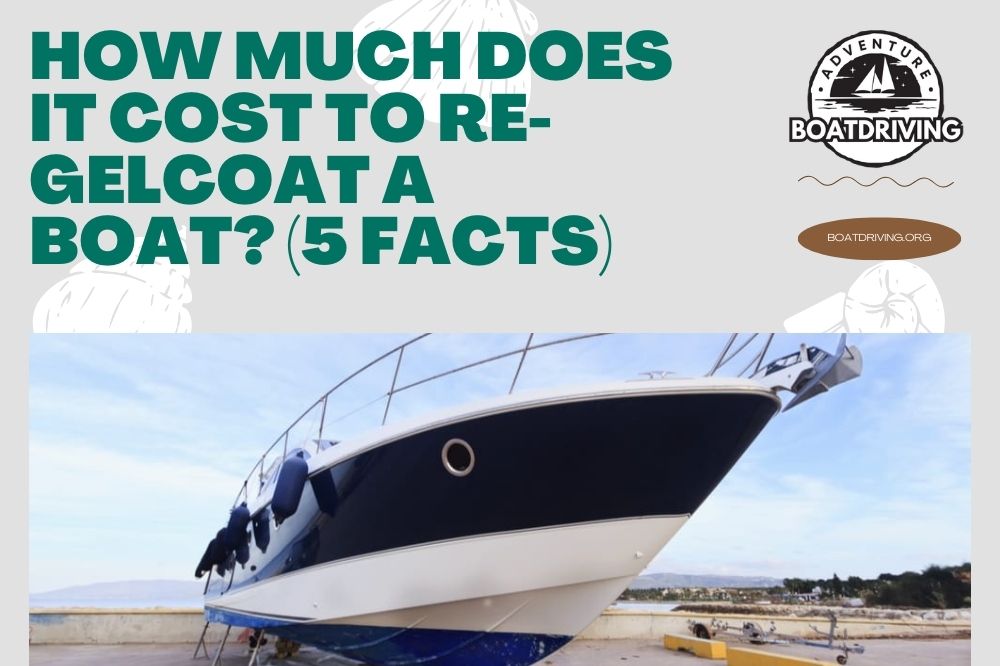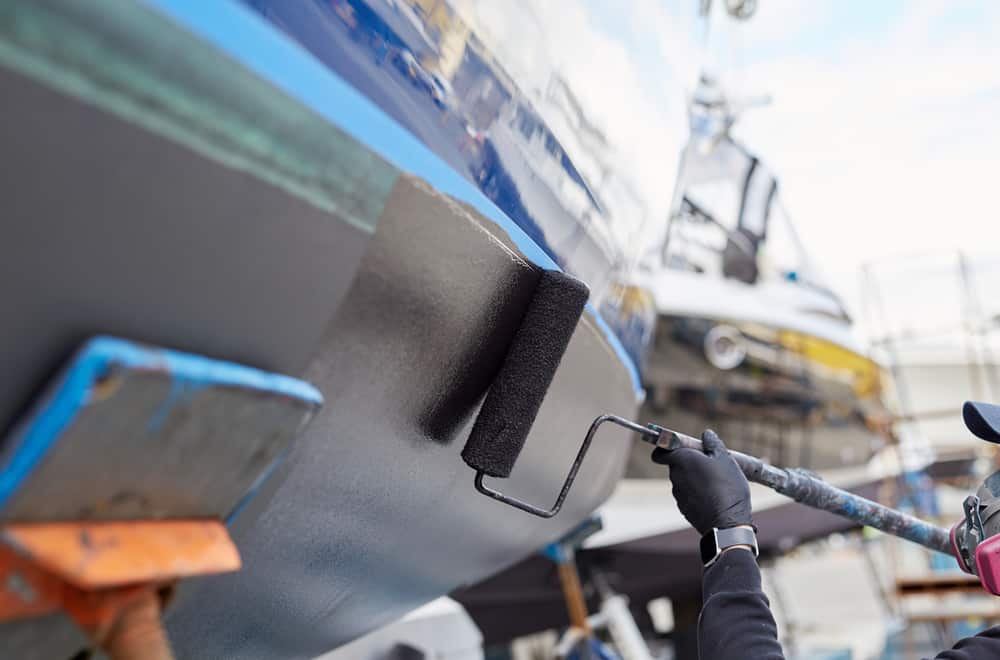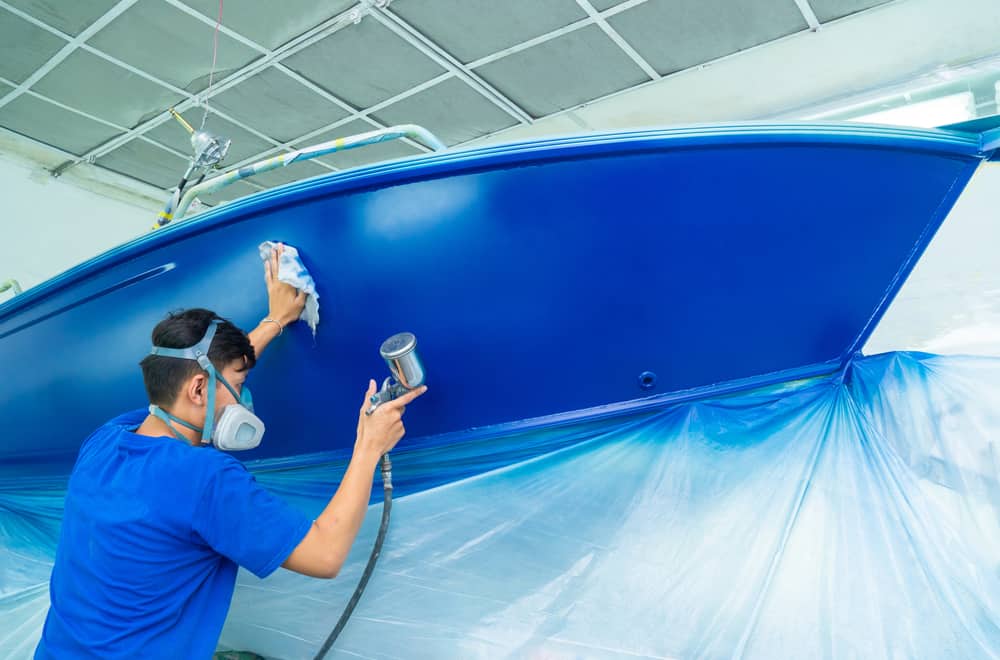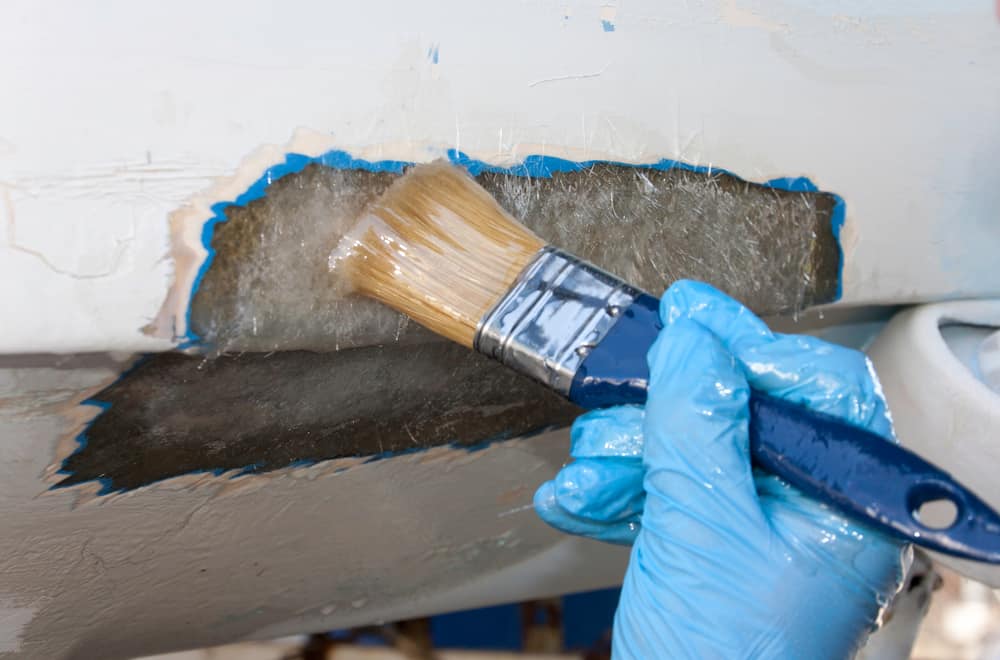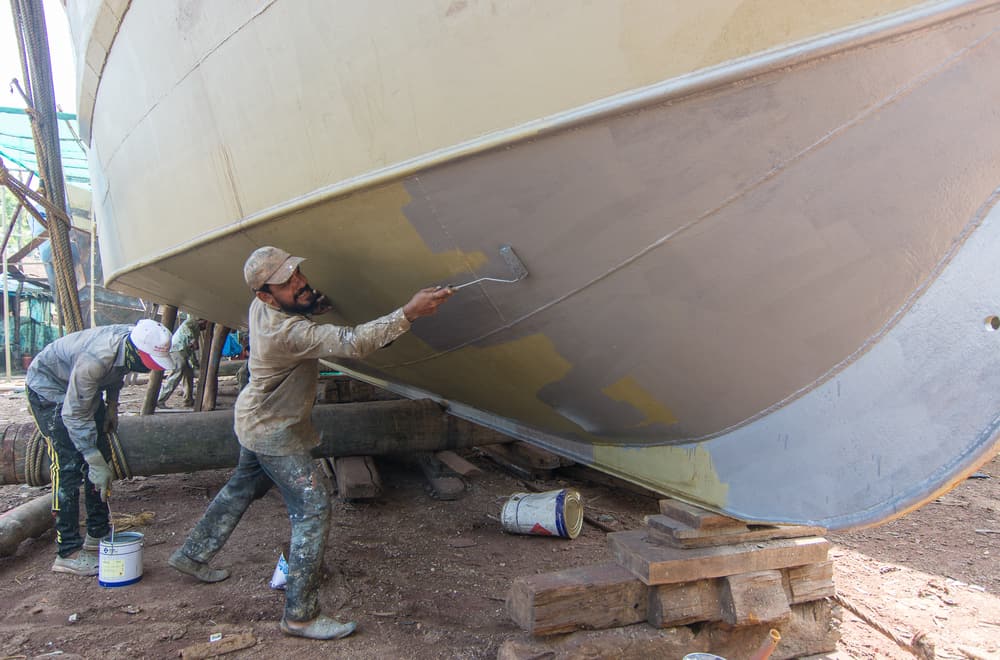Although your boat has been a faithful companion in water adventures for years, once a radiant vessel loses its splendor over time. Therefore, it is necessary to restore it, but many boat owners wonder how to achieve it.
Luckily, it is possible by removing the old gel coating from the boat hull and re-coating with the new gel. The question is, how much does it cost to re-Gelcoat a boat. The crucial thing is to find a way to do this demanding job in an appropriate way. Let’s see.
Table of Contents
What is Gelcoat and Its Importance
Gelcoat is a thermosetting polymer that consists of polyether resin or epoxy resin. It can serve as a topcoat applied to the fiberglass boat’s surface, and almost all modern vessels with this hull type have this gel coating.
The secret is to apply Gelcoat in liquid form over the fiberglass surface in a thin layer from 0.02 to 0.03 inches (0.51 – 0.76 mm) and let the coating form a wrapper around the hull during drying. Since it contains pigments, you can even choose to have your boat coated in your favorite color.
Remember that the beautiful appearance is not the only reason for applying this coating on the boat’s hull, but its primary purpose is to protect your boat. Fiberglass is an excellent material for making vessels since it is light and pretty durable.
However, this material is susceptible to damage due to ultraviolet radiation coming from sunlight. It is also porous and can form blisters after a long time spent in water. Those are reasons why applying Gelcoat is vital. It will protect the fiberglass hull from damage and fading.
Gelcoat vs. Boat Paint
There is often a dilemma among boat owners as to what is best for coating the fiberglass hull with a gel coat or painting it. As always, both options have their advantages and downsides. Whichever you choose, the preparatory work and maintenance are similar, but the result is not the same. Let’s take a look.
Gelcoat
Gelcoat is a cheaper material if you compare it to marine paint price, but it has a couple of advantages. First, its composition will successfully protect your boat against UV rays. Second, it is a long-lasting material that can stay intact for twenty years with proper care and maintenance.
For instance, you need to apply a quality wax layer to the hull every three to four months, wash your boat, and keep it away from sunlight when out of use.
The gel coating’s primary disadvantage is that it requires intensive work on preparing the boat before coating. Plus, the Gelcoat application itself involves a lot of working hours.
Finally, the gel coating has a limited shades number that you can use for the boat. Plus, It will be hard to add a picture or graphic to the hull.
Boat paint
Boat paint is generally a more expensive option, but it comes in several shades and is easier to work with. However, paints don’t have any protective effect and usually last for about two years.
Keep in mind that paints are heavy to maintain and often contain copper that dissolves and adversely affects wildlife in the water. Furthermore, they are also prone to cracking and chemically unstable, making them a less durable option than a Gelcoat.
How Much Does It Cost to Re-Gelcoat a Boat?
It is not possible to make an accurate estimate of the re-coating boat cost. It mainly depends on:
- The boat size
- The damage levels
- The damage type
- Whether you need a full or partial boat re-gel coating
- The surface size to be protected
Keep in mind that both re-gel coating an old boat and protecting an entirely new vessel require the same preparation procedure.
When hiring a professional to do re-gel coating, remember that they are doing a job appraisal at a rate. The typical price will be $300 to $500 per foot if the hull is in excellent condition without significant damage.
This price always includes material, but the final costs will depend on the scope of work and the region where you live. In most cases, one-third of the costs are for materials, while two-thirds are labor costs.
That means you will roughly spend about $8,000 for 16 feet (4.9 m) long vessel, but be prepared that the price can significantly vary. On the other hand, you can decide to pay re-Gelcoat per hour. In that case, you should count on $75 to $110 per hour. This price includes both material and labor costs.
When there is no damage to the existing gel coating, the procedure will be effortless and cost you less. However, if the old gel coating is damaged, it is necessary to repair it first before the boat is ready for a re-Gelcoat procedure.
Be prepared that two factors can significantly increase the total cost of re-gel coating.
Crazing
The term crazing (alligatoring) implies the hull damage when the primary Gelcoat surface looks like a cracked eggshell. It can cause a big problem and deeply damage the boat hull when failing to repair it in time.
Unfortunately, solving this damage will increase labor and material costs. Repair requires sanding and fixing existing cracks with epoxy before the final Gelcoat applying.
Blistering
Another significant problem that occurs when the water has passed through the existing gel coat layer is blisters.
It is crucial to sand and aligns them with the preserved coating surface before Gelcoat application. Then, you should fill the treated blisters with epoxy. Unfortunately, it will increase the material and labor costs.
DIY Re-Gelcoat
You can also re-Gelcoat your boat yourself. That way, you will save money and give your boat the look you want. In that case, it is crucial to follow established procedures.
Cleaning fiberglass
Cleansing is the first step in starting a re-Gelcoat procedure, and you need to do that thoroughly. Pour a detergent cup into 1 gallon (3.78 l) of warm water and use a sponge to wash the hull. Rinse it well until removing all soap residue traces and dry the surface.
If you notice mold, it will be necessary to add a cup of household bleach to the soap water. On the other hand, the best option is to use a cleaning agent designed specifically for fiberglass if there are stains of fish blood or scum from the waterline.
Additionally, you can notice oil or grease traces on the hull surface, but it is often impossible to remove them with detergent. Therefore, you need to wipe the entire surface with a cloth soaked in MEK or acetone to clean all grease traces.
Preparation
Always use masking paper and tape to protect the areas around your workspace. The next step is to protect and cover other boat parts, preferably with a tarpaulin. Don’t forget the protective gear for yourself, and be sure to cover your hands with rubber gloves.
Inspection
This step means taking a good look at the boat surface. Look for cracks, dents, scratches, or blisters on the gel coating. If you find any irregularity, it is advisable to sand it and fill it with epoxy. The surface needs to be entirely flat before applying the gel coating.
Sanding (grinding)
This step is the most strenuous part and requires your total commitment. Be extremely careful not to sand too much of the previous gel coating. Once you almost level scratches on the hull surface, it is better to continue grinding with wet sand.
As soon as you finish sanding, it is time to clean the surface. After that, quickly apply the gel to prevent dust particles from accumulating on the surface.
Applying gel coating
Apply two layers of gel to the prepared surface. They need to be 0.03 to 0.035 inches (0.77 – 0.89 mm) thick each to leave enough space for polishing. Then, you should let the coating dry for at least 24 hours, but it is a better option to let it sit for 48 hours.
Keep in mind that you will reduce that layer by 0.005 to 0.01 inches (0.13 – 0.26 mm) after polishing. Plus, the gel coating thickness will lessen for 0.002 to 0.003 inches (0.05 – 0.08 mm) during standard hull maintenance. However, there is enough gel coating to last at least ten years.
Waxing
Waxing is a significant step in boat maintenance and is the best way to extend its life. The primary purpose of this step is protection, but the wax also acts regeneratively on the gel coating.
The applying method will differ, depending on the manufacturer’s manual. The most common recommendation is to apply it with a cloth in circular motions. As soon as it dries, you should remove the excess with a soft cloth.
Summary
Boat re-Gelcoat is a demanding procedure but is the best way to freshen up the boat’s look and extend its life. There are two options to finish this job, depending on the boat size. If you have a small boat, you can tackle this challenge yourself, but it is better to leave it to the professionals if your boat is large.
